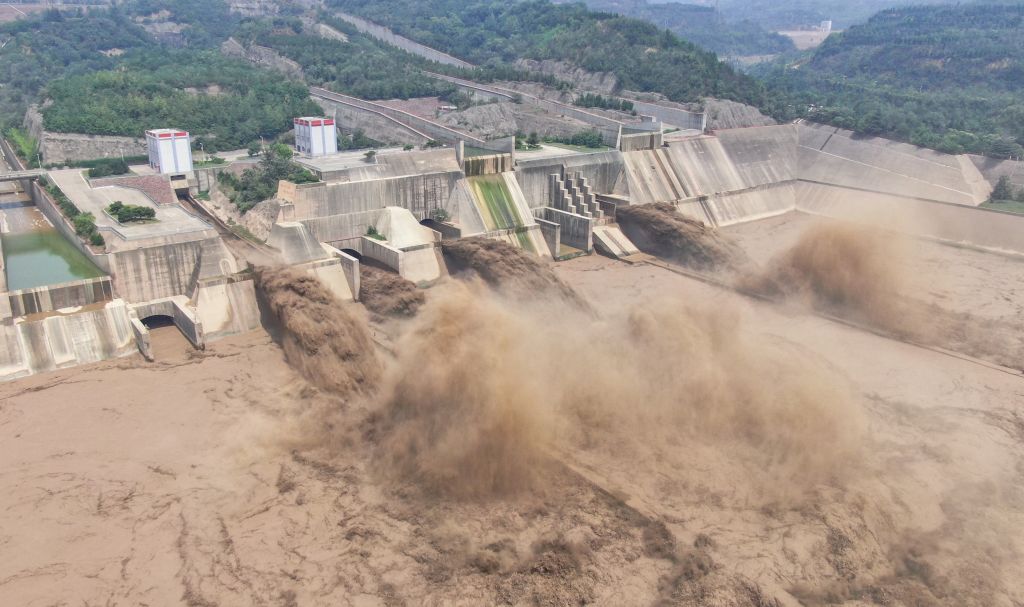
This is the second in a series of edited extracts from a forthcoming ASPI publication, The geopolitics of climate and security in the Indo-Pacific. The first article presented a 2035 climate security scenario, which is the reference point for subsequent articles, including this one.
In the past few years, much ink has been spilled by international relations and climate experts on whether tackling climate change is compatible with competition with China. At one extreme, there are China hawks who argue that climate change is a ‘dangerous distraction’ for the US Defense Department. At the other extreme are China doves, a group of whom wrote a letter in 2020 calling for an end to antagonism from the West towards China because it undermines global goals on climate.
This debate rests on the assumption that the behaviour of the US is a central factor in Chinese decision-making on climate policy. It largely ignores China’s understanding of the risks and opportunities posed by climate change, and the possibility that elements within the Chinese government may view cutting emissions and moving more quickly towards net zero as in China’s own security interests.
The climate hazards facing mainland China are well studied, including by the country’s own scientists. For example, sea-level rise threatens millions of people in China’s coastal megacities. By 2050, most of Shanghai could be under water at high tide, according to research by Climate Central. China’s own internal national climate assessment found that the country’s sea levels could rise by 40–60 centimetres above 20th-century averages by the end of this century. Interior flooding is an additional problem for China, as observed in the subway flooding in Henan Province in the summer of 2021.
Climate change also threatens China’s long-term food security. The 2035 scenario provided as a starting point for this discussion posits an all-too-believable global food security crisis as an El Niño event affects the rice bowls of China and Vietnam. Reports suggest that Chinese government officials are concerned about just such an occurrence and the impact it could have on stability within the country. The government worries about the potential challenges posed by the fact that the country’s rural minority populations in places such as Xinjiang, Inner Mongolia and Tibet are highly vulnerable to climate shocks.
As historian Adam Tooze argues, ‘The future for Beijing’s authoritarian China Dream looks far more uncertain in a world of runaway global warming.’
In April 2021, US Secretary of State Antony Blinken echoed this assessment, but from the American perspective: ‘It’s difficult to imagine the United States winning the long-term strategic competition with China if we cannot lead the renewable energy revolution. Right now, we’re falling behind.’
Hence, great-power competition, harnessed correctly, could drive climate progress as countries try to outdo each other in technology and market share of renewables.
The 2035 scenario appears to reflect a version of this ‘compete to save the planet’ framing. In this scenario, both the US and China are likely to be relative winners, in that their economies and standing on the world stage benefit from the energy transition and they aren’t feeling the worst of climate change’s effects, compared to the most vulnerable nations. However, the intersection of intensifying climate impacts and continued geopolitical competition is likely to create flashpoints for potential hot conflict.
While the ‘incident’ in the South China Sea in the 2035 scenario—the fourth in less than a decade—isn’t described in detail, it’s very likely such incidents could relate to competition over access to rapidly dwindling fish stocks in the area. Stocks have declined by one-third over the past 30 years due to a combination of overfishing, pollution and climate change. In 2020, the US for the first time took a clear position on maritime disputes over water and seabed rights in the region, suggesting an increased willingness to more forcefully defend its allies in the region when they complain of illegal behaviour by Beijing.
A second key flashpoint in the region, based on the 2035 scenario, is likely to be shared river basins, particularly the Mekong, shared by China, Cambodia, Laos, Thailand and Vietnam, and the Brahmaputra, shared by India and China. In each case, China controls the headwaters and is actively pursuing dam-building projects that will affect water flow downstream, with the states of the Mekong River basin increasingly caught between China and the US.
Finally, as the 2035 scenario mentions, the hazards and shocks brought on by climate change in the Indo-Pacific will increase the demand for humanitarian assistance and disaster relief, as well as support for adaptation and resilience, providing another pathway through which the US and China can attempt to build influence in the region. China has a history of leveraging development and climate-related support in exchange for other political goals. If China follows through on its pledge to eliminate funding for overseas coal-fired power plants by substituting clean, renewable energy projects for them, that could also give it more leverage in the region.
For its part, US President Joe Biden’s administration has proposed a range of actions to support Indo-Pacific partners in tackling climate change. Those measures include building combined response capabilities for climate-related emergencies through ASEAN and the Pacific Islands Forum, sharing climate risk-assessment tools for military infrastructure and installations, and highlighting climate risks in regional high-level dialogues. A turn away from such efforts, or the election of another US president hostile to international negotiations towards emissions cuts, could further strengthen China’s position in the region between now and 2035.
Overall, looking out to 2035, it’s apparent that the best understanding of the trajectories for both climate security and great-power competition will come from integrating the two issues in a systems analysis approach. Scholar Jeff Colgan terms this mode of thinking about climate change as an ‘altered landscape’ that sees ‘climate change not as an issue area at all, but as a pervasive background condition that is intrinsically connected to most other areas of interstate competition and cooperation’.

